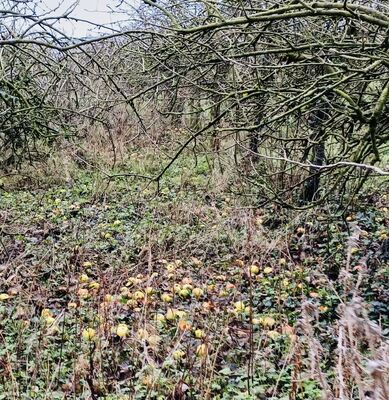DÚLRA thought it was a rumour, too extraordinary to be true. So extraordinary that the minute he read about it on a WhatsApp forum last Friday evening, he jumped in the car and drove straight to the famous site to check it out.
If it was just a rumour, he’d have wasted an hour of his life. But if the message that a colony of sand martins was actually nesting in the walls of the dry dock where the famous Titanic was built, well... that would certainly be something worth seeing.
In its own small way, it would be a remarkable footnote to the world’s most famous boat.
Sand martins, gabhlán gainimh in Irish, are swallow-like birds that nest at the end of a 3ft hole they excavate in riverbanks. Being such a specialist bird, their life is precarious – a couple of years ago Dúlra watched a colony that had nested at Six Mile Water behind the Hilton Hotel in Templepatrick. They had dug about half a dozen nests into an exposed bank – but the following year the bank had partially subsided and the colony was gone. There might be just 50,000 breeding sand martins in Ireland, with their numbers fluctuating wildly. On Friday, with the sun starting to set, Dúlra made his way down to Belfast docks. Dry docks are huge concrete basins that look like sunken outdoor arenas. They can be flooded to allow ships to sail in, and then drained so the ships can be worked on.
There are three in the Titanic Quarter from the days when Belfast led the world in shipbuilding. There’s one in front of the Titanic Building, where last year Dúlra reported that a family of mallards had nested alongside the rusting hull of an old boat built by H&W way back in 1867. This is Hamilton Dock. The second dry dock – Alexandra Dock – houses HMS Caroline. But Dúlra didn’t realise that you had to travel further along the road to see the jewel in the crown – Thompson Dock, home of the Titanic. It was the last to be built (1911) and the biggest in the world at the time. It was used right up until 2002.
The Titanic was built in the adjacent shipyard before being moved here for painting and the fitting of the propellers. The dry dock was then flooded and she set sail on that tragic voyage to New York.
There wasn’t a sinner here on Friday evening. The offices, coffee shops and even the new Titanic Distillery had all been emptied.
A sandmartin
Dúlra would bet that, just like him, most Belfast people have never set eyes on Thompson Dry Dock. But it certainly is worth making the effort to visit – it’s here that you’ll get an idea of the sheer size of the Titanic, and try to imagine what it looked like more than 100 years ago with 65,000 workers milling around like ants. If it’s hard for us to picture that scene, it would have been impossible for those workers to imagine it today. On Friday evening, there wasn’t even a single tourist there.
You have to book a guided tour to visit the Dock itself, but you can walk around the top, which is safely guarded by railings. Dúlra did just that, keeping an eye on the sky for any sign of the small brown bird. For ten minutes the only birds were seagulls and a flock of twittering goldfinches. Then a bird with arrowed wings and tail appeared in the sky – was it a sand martin or one of its cousins which had also just arrived back from Africa, house martins or swallows? Dúlra focused the bins and followed its flight.
The brown and white feathers meant it was a sand martin. Soon it was joined by more, and Dúlra used the sturdy perimeter gates to support the binoculars and followed them as they zigzagged through the clear blue sky. They looked carefree and happy. At times they disappeared behind the distillery, but always reappeared. Then more joined them – maybe six pairs in total sailing through the air. But would they drop to ground level – in fact below ground level and fly into the dry dock?
That took a further 20 minutes, but finally one wee sand martin broke away and darted down deep into the dock. It was hard to keep track of it against the brown stone background, but Dúlra held his binoculars steady. They were nesting here all right – but where were the nests? There didn’t seem to be any cavities in the perfectly hewn steps. And they certainly couldn’t excavate into the hard concrete.
Dúlra kept his hand steady for the best part of an hour, and finally one bird disappeared into the stone. The birds hadn’t been able to dig a nest like they were a sandy riverbank, but instead were using holes just a couple of feet from the top of the Dock through which thick black electric cables came through.
To these birds, the Titanic Dock must have seemed like a giant cliff-face, and the cable holes were perfectly safe cavities to nest in.
Not everyone in Belfast gets excited by the Titanic story – it’s more to attract tourists, of course. But sand martins nesting in the walls of the dock where the famous ship was built – now that's worth travelling to see.
• If you’ve seen or heard anything interesting, or have any nature questions, you can text Dúlra on 07801 414804.







